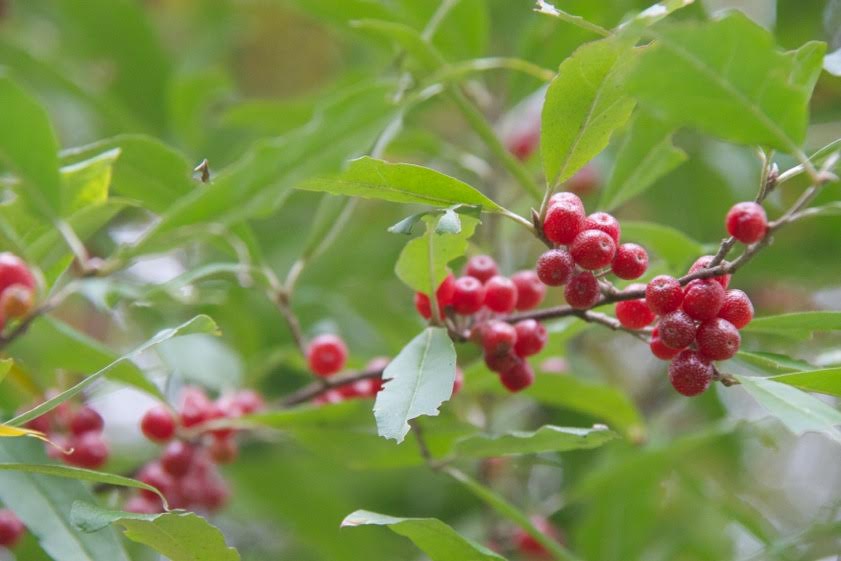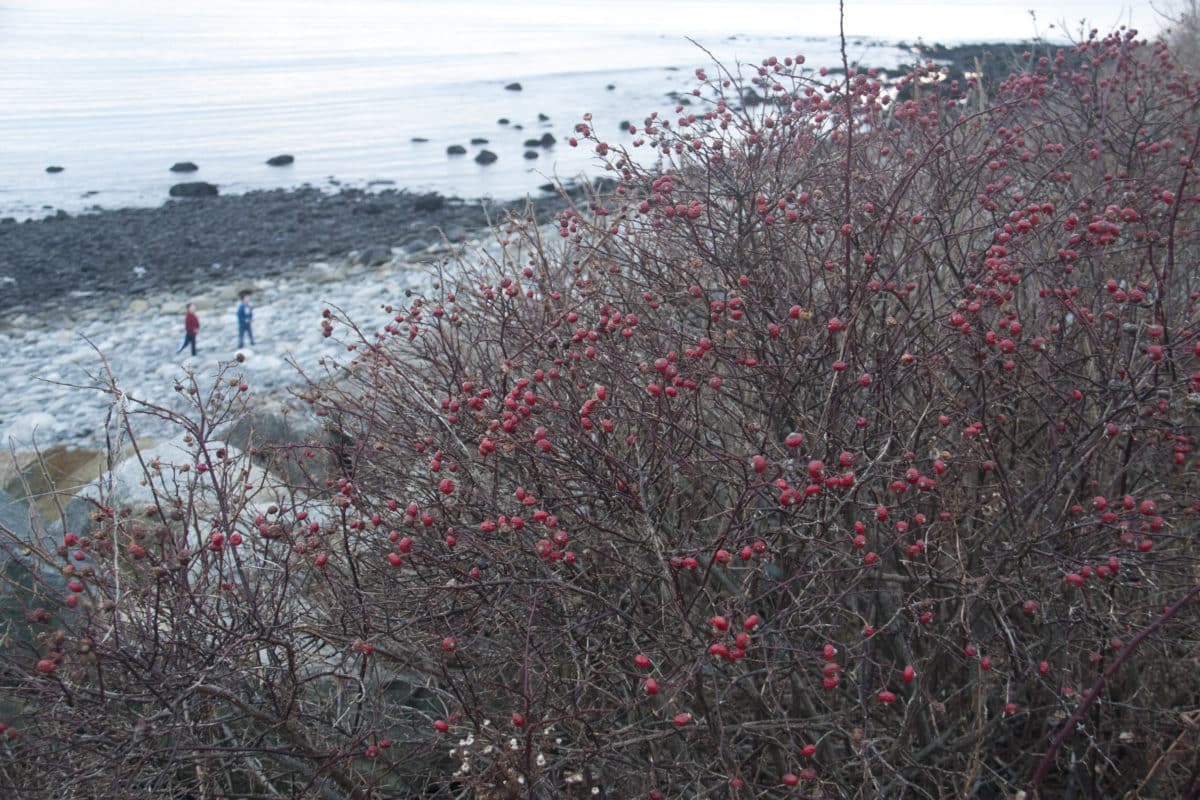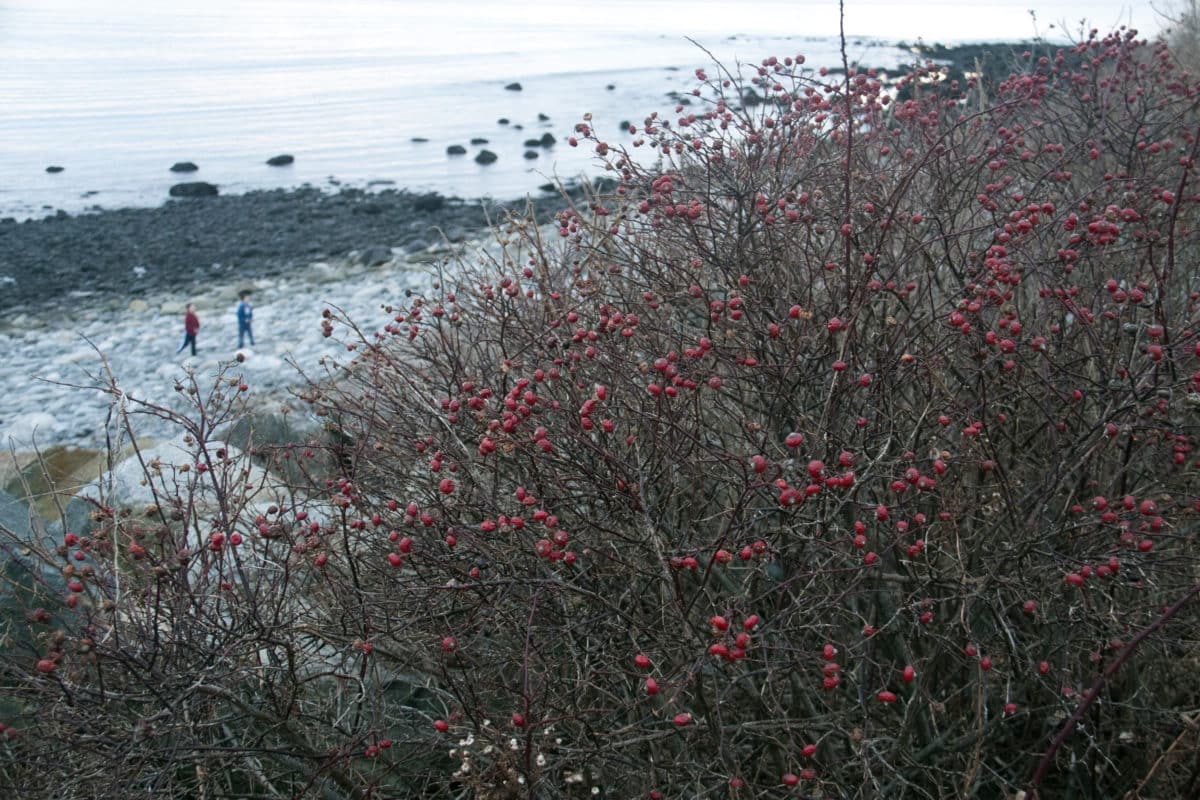As summer days grow shorter, foragers look forward to autumn. Fall offers the year’s biggest and best wild harvests. Here are some of my favorite fall fruits and recommendations on how to preserve your foraged bounty.
Silverberry (aka sweet autumn olive, aka Elaeagnus umbellata) is a large shrub, often found growing in colonies in sunny fields. The undersides of its leaves are silvery white, and its pink or red berries are speckled with silver. Silverberries are soft when fully ripe; underripe fruit is unpleasantly astringent.
This is one of my favorite foraged fruits, and not just because it’s plentiful and high in vitamin C and lycopene. Run through a food mill, the berries make a thick, gorgeous pulp that can be swirled into yogurt or used as the base for a fruit soup. It makes an excellent jelly, and wine made from silverberries is light, clean, and fruity without being too sweet. Silverberry fruit leather is tart, tasty, and an excellent way to preserve this unique flavor.

Silverberry Fruit Leather
Fruit leather makes a healthy snack and can also be rehydrated and used to make sauces or marinades. For this recipe start, with at least three cups of fruit.
Spread your silverberries on the bottom of a large pan and barely cover with water. Cook over medium heat until the fruit is soft enough to mash, then run the mixture through a food mill to remove the seeds.
Taste the fruit pulp, and decide whether it needs sweetening. Silverberries are tart, and will be tastier with sugar, honey, or agave nectar. Start with a half
Crab apples (aka Malus species) are common garden plants, but very few people realize the fruit is edible. Technically, a crabapple is any apple with a diameter of less than two inches. Crab apples with a diameter greater than an inch are often as crisp and tart as the best Granny Smith. Smaller crab apples (approximately 1.3 cm [½ inch] in diameter) often have a mealy texture but this is easily remedied by cooking. Crab apples make excellent jellies, pies, applesauce, and chutneys.
Crabapples have lots of pectin, which accounts for their sour taste. If you’re going to make jelly, harvest before a frost, when pectin levels are highest. Otherwise, let them stay on the tree to sweeten up a bit, but pick them before they start to shrivel.

Rose Hips (aka Rosa species). Any rose that hasn’t been sprayed with hideous chemicals can yield edible fruit (aka hips) if their flowers have been pollinated. Bigger hips, like those of the rugosa rose, are easier to work with than smaller fruits. Pick rose hips after they’ve turned red and before they start to wrinkle. If you can wait till after a frost, they’ll be sweeter.
Rose hips contain many tiny seeds, surrounded by hairs. To clean the fruit, cut it in half, scrape out the seeds, and discard them. If you plan to make rose hip jelly or syrup, there’s no need to remove the seeds. Process the fruit as you would any other, simmering in minimal water and straining through cheesecloth or a jelly bag. If you want pulp rather than juice (for chunkier applications), remove the seeds, then process the fruit for jam, soup, or chutney.


Cranberries (aka Vaccinium macrocarpon, V. oxycoccus) Contrary to what you see on television, cranberries don’t grow in water; they grow in boggy soils and on the shores of lakes. Commercial growers flood their fields for easy harvesting, but foragers harvest their cranberries dry. It’s a slow process, but the benefit of dry harvesting is that the berries are less likely to be bruised.
Cranberries start out white and ripen to a bright red color. Depending on where you forage, the season can start as early as August and run through December. Berries left on the plant through a frost taste sweeter, but they’re also soft and harder to pick without damaging.
Bring along a pair of knee pads when you forage for cranberries. The plants are only 15 to 30 cm (6 to 12 inches) tall and constant bending over can leave you questioning your commitment to foraging. The knee pads not only cushion your joints, but since cranberries grow where the soil is wet and squishy, they’ll keep your knees dry.
Fresh cranberries are mostly tart with a tiny edge of sweetness; they contain lots of pectin. That means you can make a perfect jelly, or a chunky chutney. ![]()
